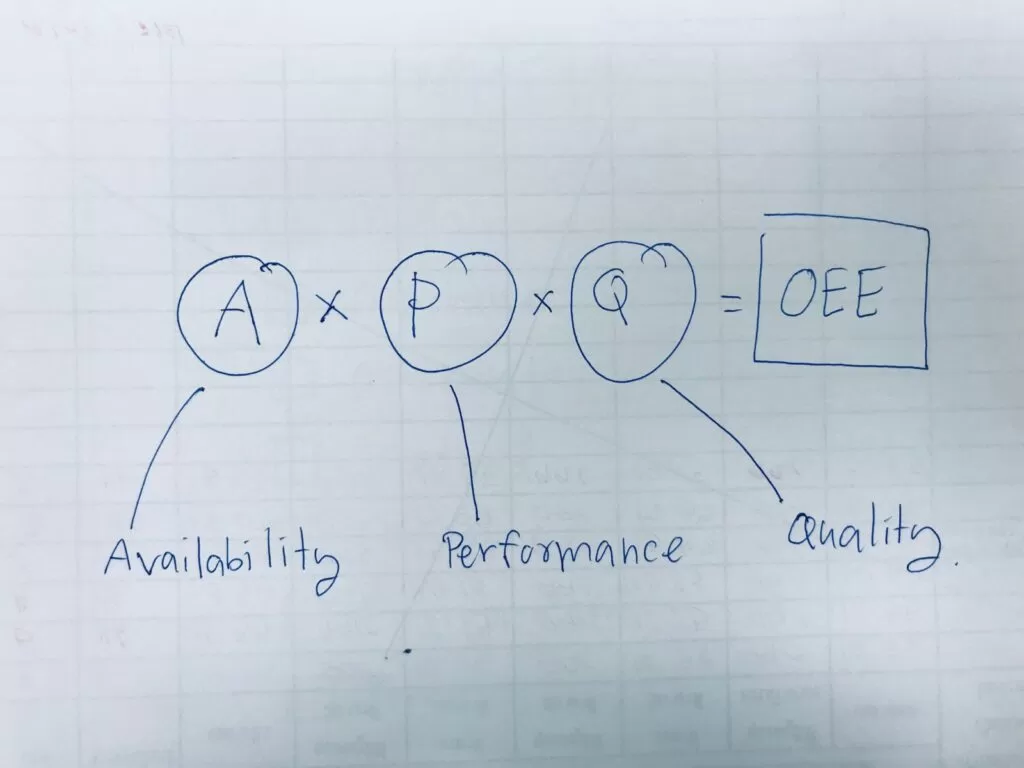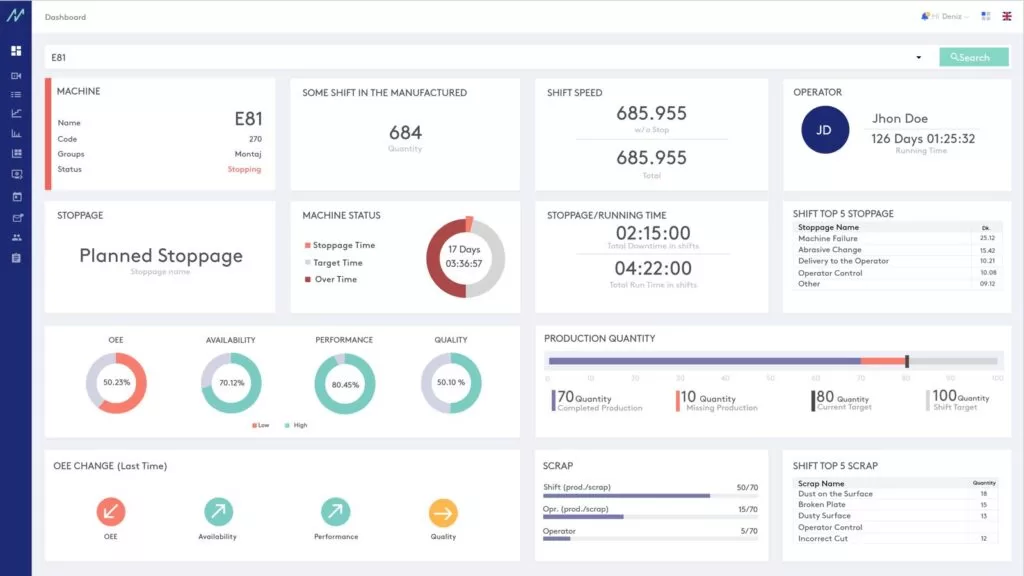OEE (Overall Equipment Effectiveness) is the gold standard for measuring manufacturing productivity. It is a critical metric widely used in manufacturing that helps measure production equipment performance. It measures by quantifying the percentage of planned production time that is truly productive. In other words, OEE helps show how effectively your equipment is utilized to produce high-quality products.
So, let’s take a deeper look into everything you need to know about OEE.
The Importance of OEE in Manufacturing
World-class manufacturing targets at least 85% OEE for all manufacturers. A low OEE shows significant room for improvement and potential cost savings. Having a high OEE translates into tangible benefits for your business, such as:
- Increased Productivity: The high OEE indicates manufacturing equipment is running at optimal speed with minimal downtime. Similarly, it can help manufacturers improve output and meet increasing customer demand by pinpointing and eliminating production bottlenecks.
- Reduced Costs: When your manufacturing equipment operates efficiently, it consumes fewer resources to save you money. However, a lower OEE correlates with higher levels of waste, including rework, scrap, and excess inventory. By improving OEE, businesses can streamline operations, reduce expenses, and improve profitability.
- Enhanced Product Quality: There’s no denying the fact that the most vital component of OEE is quality. Manufacturers can improve customer satisfaction, reduce warranty claims, and strengthen their brand reputation by focusing on producing defect-free products.
- Optimized Resource Utilization: A criminally underrated benefit of OEE is that it helps identify underutilized equipment and labor. In other words, it enables businesses to allocate resources more effectively. And by optimizing resource allocation, manufacturers can increase productivity without necessarily increasing costs.
- Competitive Advantage: In today’s cut-throat market, inefficiency means losing business fast; efficiency is paramount. A high OEE demonstrates a company’s commitment to operational excellence, allowing it to outperform competitors in cost, quality, and delivery time.
How is OEE Calculated?
In simple terms, OEE is a quantitative measure of how effectively equipment is used to produce high-quality products. Three key performance indicators help calculate OEE: Availability (the percentage of the equipment available to run), Performance (the percentage of planned production time that the equipment runs at maximum speed), and Quality (the percentage of produced parts that conform to quality standards).
Once we have all these performance indicators, we apply the OEE formula:

It’s worth mentioning that most manufacturers strive for an OEE between 85% and 90% (a much more feasible number to approach), which indicates a highly efficient operation. Also, it’s important to comprehend that improving OEE often involves a systematic approach. This means identifying and addressing the factors that contribute to losses in each of the three components. This requires careful data collection, analysis, and the implementation of targeted improvement initiatives.
Way on How To Improve OEE
If you want to improve OEE, it is extremely crucial that you identify and address the six primary categories of losses that, more often than not, hinder optimal equipment performance:
- Downtime: Understandably, this is for any period when equipment is not producing output as planned. This includes two types of stoppages: unplanned downtime (due to breakdowns, malfunctions, or unexpected issues) and planned downtime (for maintenance, setups, or cleaning).
- Speed Losses: This usually occurs when equipment operates below its designed or ideal cycle time. This can be caused by reduced speed, minor stoppages, or suboptimal process parameters.
- Production Defects: One of the most common issues is that products do not meet quality standards and require rework or scrap. These defects can arise from various sources, including material issues, process inconsistencies, or operator errors.
- Startup and Shutdown: Time lost at the beginning and end of production shifts, including warm-up, tool changes, and initial adjustments.
- Minor Stoppages: These brief interruptions in production usually occur due to small issues such as material jams, tool changes, or equipment adjustments. While individually short, these stoppages can accumulate and significantly impact overall efficiency.
- Idling and Small Stops: Last but not least, these occur due to equipment inactivity within a production cycle, often caused by operator delays, material handling issues, or equipment limitations.
Boosting Operational Equipment Efficiency with ProManage: A Smart Solution for Enhancing Manufacturing Productivity
Maximizing Overall Equipment Efficiency (OEE) in today’s manufacturing environment is essential for staying the leader. ProManage, a Manufacturing Execution System (MES), offers an approach to improving OEE through real-time data and analytics. Using ProManage, manufacturers can monitor machine performance, pinpoint bottlenecks, and proactively implement maintenance strategies to minimize downtime. This detailed insight enables adjustments to keep production lines running smoothly, ultimately boosting OEE by optimizing resource utilization.
Moreover, ProManage seamlessly integrates with systems, ensuring data from sources is consolidated into a user-friendly platform. This integration enhances visibility throughout the production process, simplifying the tracking and analysis of performance metrics like Availability, Performance, and Quality. ProManage empowers manufacturers to continually improve their OEE levels for productivity, cost savings, and overall operational efficiency by delivering insights and supporting data-driven decision-making.

If you have any other questions related to OEE or how we can help you increase your OEE, please feel free to contact us. One of our experts will thoroughly guide you on how ProManage can help increase our OEE.

